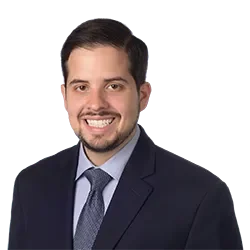ASAP
High Court Reaffirms Preponderance-of-the-Evidence Standard for FLSA Overtime Exemptions
On January 15, 2025, the U.S. Supreme Court ruled that disputes over the applicability of overtime exemptions under the Fair Labor Standards Act (FLSA) are governed by the preponderance-of-the-evidence standard. In so doing, the Court rejected the heightened “clear and convincing” level of proof that the Fourth Circuit had required and clarified the standard of proof for FLSA overtime exemption claims.
Background of Carrera and Prior Decisions
In E.M.D. Sales, Inc. v. Carrera, three sales representatives sued their employer, a Washington, D.C. area food distributor, alleging they were misclassified under the FLSA’s “outside sales exemption” and denied overtime pay. The plaintiffs claimed their primary duties were taking routine orders and managing inventories rather than making sales, as required to satisfy the federal outside sales exemption. The U.S. District Court for the District of Maryland, following a bench trial, ruled in the plaintiffs’ favor, finding that the employer failed to prove by “clear and convincing evidence” that the exemption applied. On appeal, the Fourth Circuit upheld the trial court decision that a heightened “clear and convincing evidence” standard applied to misclassification claims brought under the FLSA. In so doing, the Fourth Circuit created a circuit split, as every other federal appellate court to address the issue had held that the lessened “preponderance of the evidence” standard applies. The employer appealed to the Supreme Court, arguing the Fourth Circuit erred in requiring a heightened evidentiary standard.
The SCOTUS’s Decision in Carrera
Justice Brett Kavanaugh, writing for a unanimous Court, held that “preponderance of the evidence” standard applies to determinations regarding the applicability of FLSA exemptions, rejecting the Fourth Circuit’s application of a heightened “clear and convincing evidence” standard.
Justice Kavanaugh emphasized that the default standard of proof in American civil litigation is the preponderance of the evidence standard, and that heightened standards apply in three scenarios only: (1) when required by statute, (2) when mandated by the Constitution, or (3) when the matter involves significant government action, such as citizenship revocation. The FLSA does not specify a standard of proof for exemptions, and when a civil statute is silent, courts typically apply the preponderance standard.1 The Court’s decision aligns the standard of proof used in FLSA exemption disputes with the evidentiary approach used in other workplace protection cases, including Title VII of the Civil Rights Act of 1964.
Justice Neil Gorsuch, joined by Justice Clarence Thomas, concurred to reiterate that courts should adhere to the default standard unless expressly modified by Congress or the Constitution.
Takeaways
This decision clarifies the evidentiary standard employers must meet when defending misclassification claims brought under the FLSA. The decision further emphasizes lower courts’ judicial restraint and caution in not exceeding established legal norms. The case also serves as a good reminder to employers that if an exempt classification is challenged, the employer will bear the burden of proving that the overtime exemption applies. While it is now clear that the applicable burden will be the “preponderance of the evidence” standard, it remains incumbent on employers to ensure that they will be able to meet that burden with evidence (such as job descriptions and performance management documentation) about the exempt nature of the position.
*Jerry Zhang is a pre-bar associate in Littler’s New York City office.
